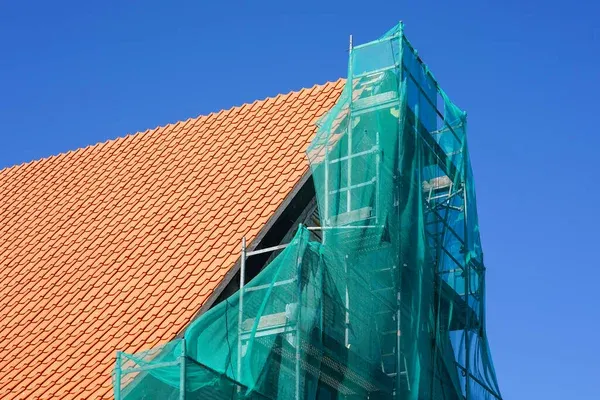Replacing a roof is one of the most important — and costly — home improvement projects a homeowner can face. With changing material prices, labor rates, and economic conditions, roof replacement costs in 2025 have evolved compared to previous years.
If your roof is nearing the end of its life, understanding the current costs, influencing factors, and money-saving options can help you plan ahead and make informed decisions.
Let’s break down everything you need to know about roof replacement costs in 2025.
🔹 Average Roof Replacement Cost in 2025
As of 2025, the average cost to replace a roof in the U.S. ranges between $7,500 and $16,000, depending on the size, materials, and complexity of the project.
Here’s a quick breakdown:
| Roof Type | Average Cost (2025) | Lifespan |
|---|---|---|
| Asphalt Shingles | $5,000 – $10,000 | 20–30 years |
| Metal Roof | $10,000 – $20,000 | 40–70 years |
| Tile Roof | $15,000 – $30,000 | 50+ years |
| Wood Shake | $12,000 – $18,000 | 25–35 years |
| Slate Roof | $20,000 – $45,000 | 75–100 years |
These prices include materials, labor, and disposal of old roofing, but your actual cost may vary based on your location and home size.
🔹 Key Factors That Affect Roof Replacement Costs
Several elements influence how much you’ll pay for a new roof in 2025.
✅ 1. Roof Size and Pitch
Larger roofs require more materials and labor. Steeper roofs are more difficult (and dangerous) to work on, increasing labor costs.
✅ 2. Roofing Material
Material choice has the biggest impact on cost. Asphalt shingles remain the most affordable option, while slate, tile, and metal roofs are premium choices that last longer but come with higher upfront expenses.
✅ 3. Labor Costs
Labor makes up 40%–60% of your total bill. In 2025, due to inflation and skilled labor shortages in the construction industry, roofing labor costs have risen by 5–10% compared to 2024.
✅ 4. Roof Complexity
Features like chimneys, skylights, dormers, or multiple roof levels increase complexity — and price — because they require more detailed work and flashing.
✅ 5. Location and Climate
Your region affects both material prices and labor rates. For example, coastal or high-wind areas may require specialized materials that meet building codes.
✅ 6. Roof Removal and Disposal
Removing old shingles typically costs $1 to $5 per square foot, depending on how many layers must be torn off. Proper disposal and cleanup add to the final bill.
🔹 Additional Costs to Consider
Beyond materials and labor, homeowners should budget for extra expenses:
- Permits and inspections: $150 – $500 depending on your city or county.
- Structural repairs: If the decking or framing is damaged, costs can increase by $1,000 – $3,000.
- Gutter replacement: $1,000 – $2,500 for new gutters and downspouts.
- Roof ventilation upgrades: $300 – $1,200 for improved airflow and energy efficiency.
🔹 How to Save Money on Roof Replacement in 2025
A new roof is a big investment, but there are smart ways to reduce costs without compromising quality.
💡 1. Get Multiple Quotes
Always compare at least 3 estimates from licensed roofing contractors. This helps you identify fair pricing and avoid overcharging.
💡 2. Choose Materials Wisely
If budget is tight, go for architectural asphalt shingles — they offer a great balance between durability and affordability.
💡 3. Time Your Project Strategically
Roofing contractors are busiest in summer. Scheduling your replacement in late winter or early spring may get you better rates.
💡 4. Check for Warranties and Rebates
Some manufacturers offer extended warranties or energy-efficient rebates for certain roofing materials, especially reflective or solar shingles.
💡 5. Homeowners Insurance
If your roof was damaged by a storm, fire, or natural disaster, part or all of your replacement cost may be covered by your insurance policy. Always check before starting work.
🔹 Roof Replacement Trends in 2025
The roofing industry in 2025 is shifting toward sustainability and energy efficiency. Here are a few trends influencing modern replacements:
- Solar-integrated roofing systems are becoming more popular.
- Cool roofs with reflective coatings reduce energy costs.
- Recycled and eco-friendly materials are increasingly in demand.
- Smart roofing technology allows real-time monitoring for leaks and heat loss.
These innovations might come with higher upfront costs but can increase long-term savings and boost property value.
🔹 When to Replace Your Roof
Even if your roof isn’t leaking yet, you should consider replacement if:
- It’s over 20 years old.
- Shingles are cracked, curling, or missing.
- You notice frequent leaks or water damage.
- The roof looks saggy or uneven.
- You’ve had to make multiple repairs recently.
Addressing these issues early can prevent costly damage to your home’s structure and interior.
🔹 The Bottom Line
In 2025, roof replacement costs continue to rise due to material and labor inflation — but investing in a high-quality, durable roof is one of the best decisions a homeowner can make.
A new roof enhances your home’s safety, improves energy efficiency, and boosts resale value. By understanding the factors that affect pricing and planning ahead, you can make a smart investment that protects your home for decades to come.

